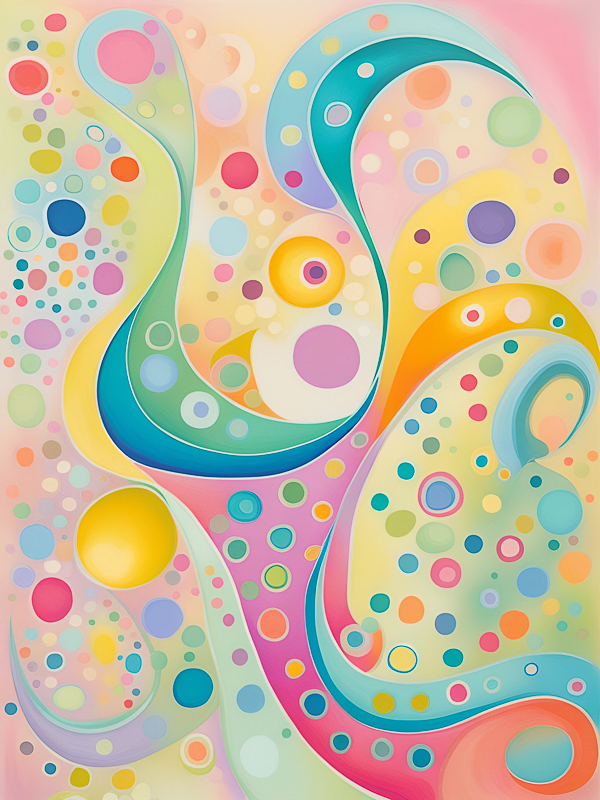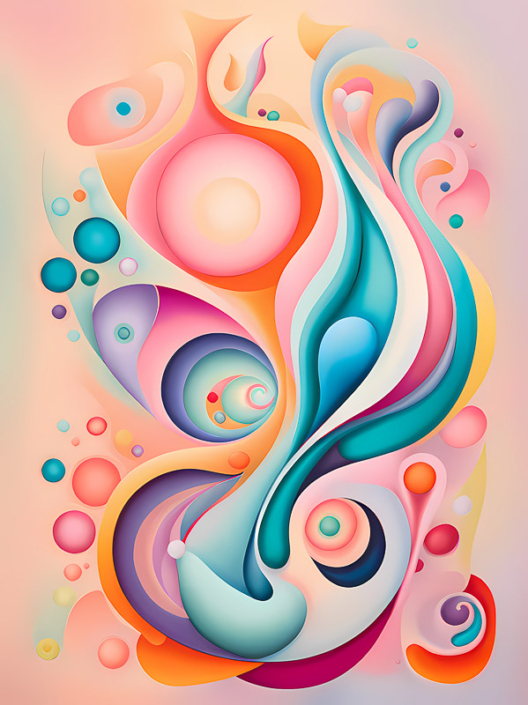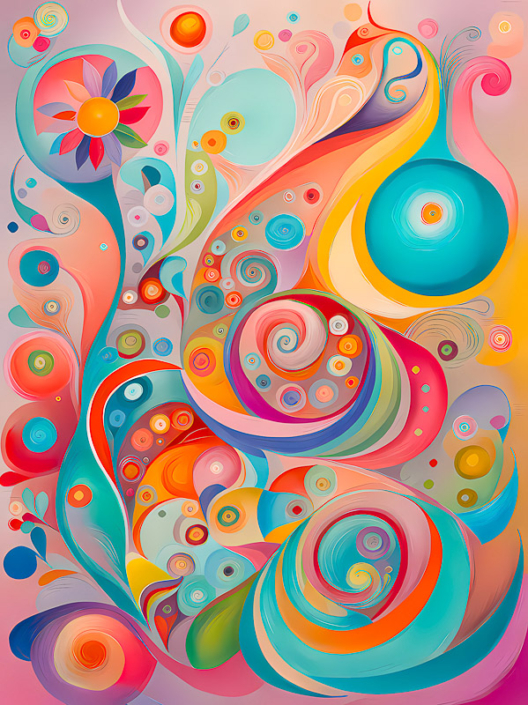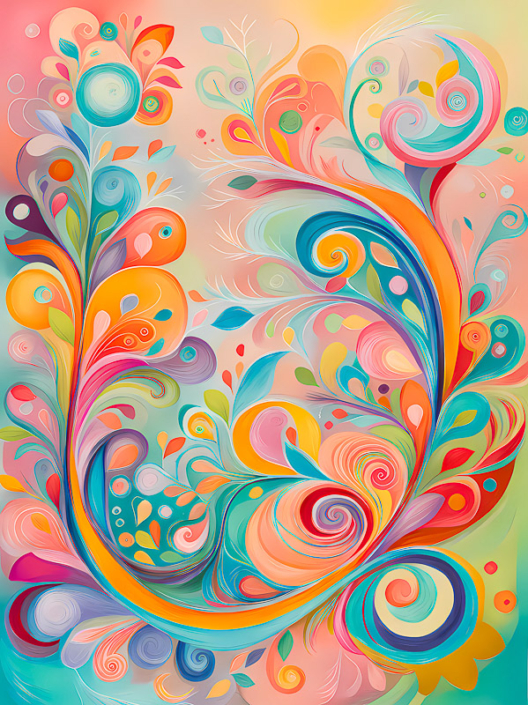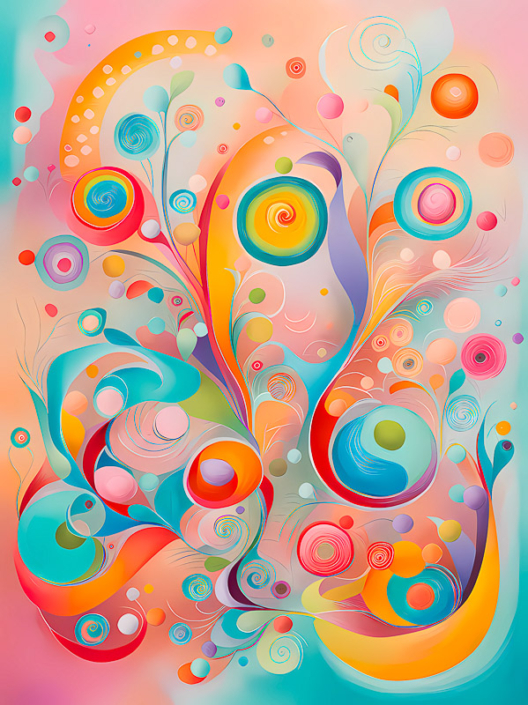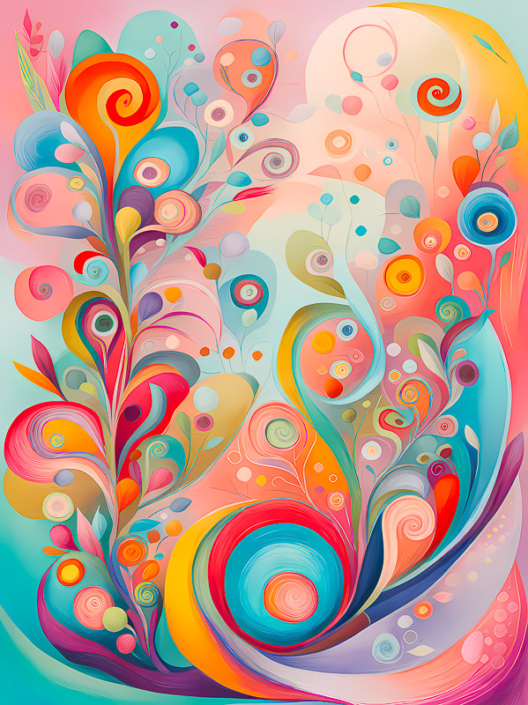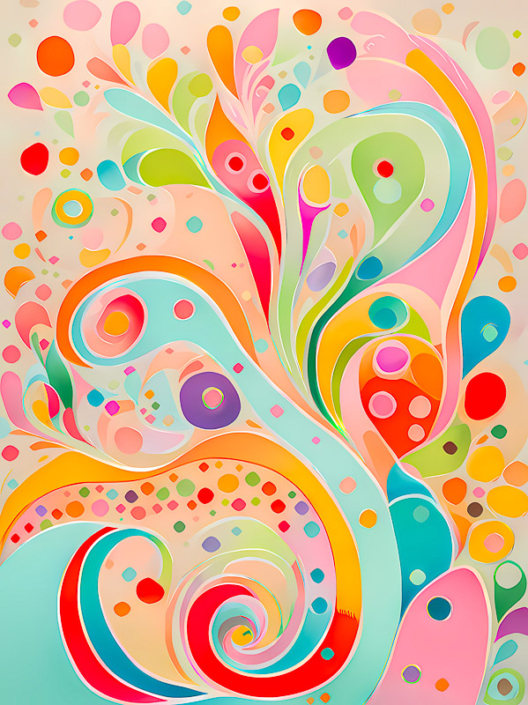Abstract Art: Lyrical Abstraction
What is Lyrical Abstraction?
Lyrical Abstraction, a captivating movement within the realm of abstract art, blossomed during the mid-20th century, particularly in the vibrant era of the 1960s. This expressive style is distinguished by abstract paintings that radiate spontaneity, gestural freedom, and a profound emotional resonance. Key characteristics of Lyrical Abstraction, deeply rooted in the traditions of abstract art, encompass:
1. Gestural Expression:
– Lyrical Abstraction celebrates the gestural expression of artists, manifesting in dynamic and spontaneous brushstrokes that capture a sense of movement—a hallmark within the expansive landscape of abstract art.
2. Emotional Content:
– Artists immersed in Lyrical Abstraction, akin to the broader scope of abstract art, prioritize the conveyance of emotional and spiritual content. The objective is to evoke feelings and subjective experiences through their canvases.
3. Colorful Palette:
– True to the spirit of abstract art, Lyrical Abstraction employs a vibrant and diverse color palette. Colors are chosen and applied expressively, enhancing the emotional resonance and visual impact of the artwork.
4. Abstract Forms:
– Embracing the abstract in art, Lyrical Abstraction utilizes forms that are often organic and suggestive rather than strictly geometric. These forms may draw inspiration from the natural world or evoke a poetic sensibility within the abstract composition.
5. Large Scale:
– Reflecting a common trait in abstract art movements, many Lyrical Abstraction works unfold on a large scale. This expansive canvas size contributes to a more immersive and impactful experience for the viewer.
6. Spontaneity and Intuition:
– In harmony with the spirit of abstract art, Lyrical Abstraction places value on spontaneity and intuition. Artists engage in a process that embraces the unexpected, with chance elements adding depth and complexity to their creations.
7. Individual Expression:
– Lyrical Abstraction champions the individual expression of artists, a foundational principle in abstract art. Each artist brings forth a unique style and personal vision, contributing to the diverse and rich tapestry of the movement.
Prominent artists associated with Lyrical Abstraction, operating within the expansive realm of abstract art, include Joan Mitchell, Sam Francis, Helen Frankenthaler, and Willem de Kooning. Lyrical Abstraction stands as a testament to the creative freedom and emotional depth that artists can explore within the evolving landscape of abstract art movements.
How to create Lyrical Abstraction?
Creating Lyrical Abstraction involves embracing spontaneity, gestural expression, and an exploration of emotions on canvas. Here are some steps to guide you in the process:
1. Select Your Tools and Materials:
– Choose your preferred painting materials, such as acrylics or oils, and select brushes, palette knives, or any tools that align with your desired expressive style. Consider using a large canvas to allow for greater freedom of movement.
2. Prepare Your Workspace:
– Set up a workspace that allows you to move freely around the canvas. Ensure you have ample space for gestural brushstrokes and spontaneous movements. Lay down protective materials as needed.
3. Expressive Gesture Warm-Up:
– Before diving into your main canvas, engage in a warm-up session. Make gestural movements, experiment with different brushstrokes, and allow your body to respond to the canvas intuitively. This helps tap into a spontaneous and expressive mindset.
4. Choose a Lyrical Theme or Emotion:
– Lyrical Abstraction often conveys emotions or themes through abstract forms. Consider the emotions or concepts you want to express in your painting. This could be joy, melancholy, energy, or any lyrical theme that resonates with you.
5. Start with Large Gestures:
– Begin the painting with large, sweeping gestures. Use broad brushstrokes, palette knives, or your preferred tools to establish the foundational elements of your composition. Allow the paint to flow freely.
6. Build Layers and Depth:
– As you progress, build layers of paint to add depth to your composition. Experiment with layering colors and consider the transparency or opacity of your paint to create visual interest.
7. Embrace Color Exploration:
– Lyrical Abstraction often involves a vibrant and diverse color palette. Experiment with color combinations and allow the colors to interact spontaneously on the canvas. Be open to unexpected color harmonies.
8. Incorporate Organic Shapes:
– Introduce organic shapes or forms into your composition. These can be inspired by nature or created intuitively. Let the shapes emerge in response to your emotional and gestural expressions.
9. Balance and Composition:
– While spontaneity is key, step back periodically to assess the overall balance and composition. Make adjustments as needed to ensure a harmonious and visually engaging artwork.
10. Refine and Define:
– Refine your painting by defining certain elements with more precision. Use smaller brushes or tools to add details, lines, or accents that contribute to the lyrical quality of the composition.
11. Integrate Personal Mark-Making:
– Incorporate personal marks, symbols, or signature gestures that are unique to your artistic voice. These elements add a personal touch and contribute to the individual expression inherent in Lyrical Abstraction.
12. Reflect and Iterate:
– Take moments to reflect on your work, and if necessary, iterate or make additional expressive gestures. Lyrical Abstraction often involves a dynamic and evolving process.
Remember that Lyrical Abstraction is about expressing emotions and creating a visual poem on canvas. Embrace the freedom to explore, and allow your intuition and emotions to guide your artistic decisions.


